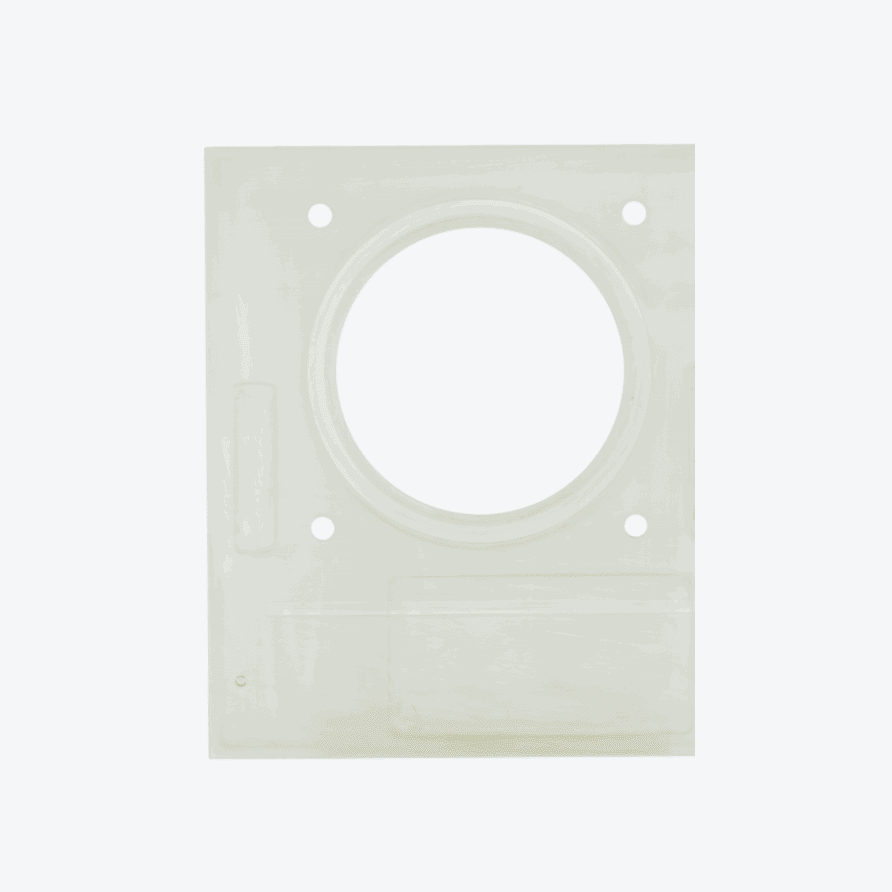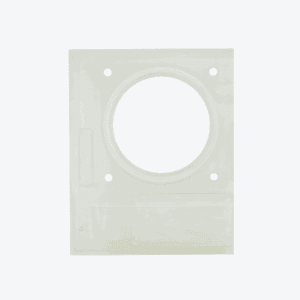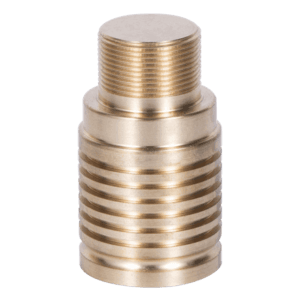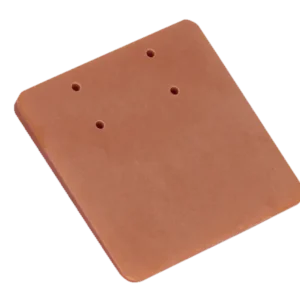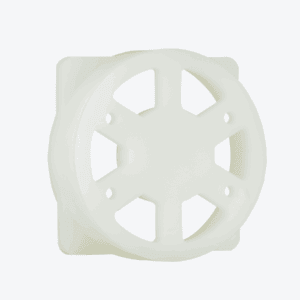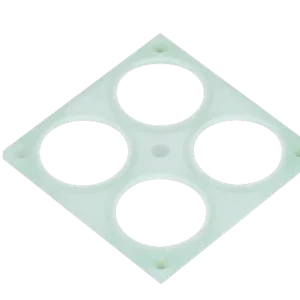Polycarbonat (commonly abbreviated as PC) is a polymer that contains carbonate groups in its molecular chain. It can be categorized into different types based on the structure of the ester group, including aliphatic, aromatic, and aliphatic-aromatic polycarbonates. Among these, only aromatic polycarbonates are produced industrially, as aliphatic and aliphatic-aromatic polycarbonates exhibit lower mechanical properties, which limits their application in engineering plastics. Due to its unique structural characteristics, polycarbonate has emerged as the fastest-growing general engineering plastic among the five major engineering plastics.
Mechanical Properties:
Density: 1.18-1.22 g/cm³
Linear Expansion: 3.8×10⁻⁵ cm/°C
Heat Deflection Temperature: 135°C
Low Temperature Resistance: -45°C
Polycarbonate is colorless and transparent, with excellent heat resistance, impact resistance, and flame retardant properties (BI grade). It maintains good mechanical properties within common usage temperatures. While its performance is comparable to that of polymethyl methacrylate (PMMA), polycarbonate offers superior impact resistance, a high refractive index, and good processing capabilities. Additionally, it achieves UL94 V-2 flame retardant performance without the need for additives. However, PMMA is generally less expensive and can be produced in larger quantities through continuous polymerization.
In terms of abrasion resistance, polycarbonate outperforms ABS materials, but when compared to most plastic materials, its abrasion resistance is relatively moderate, placing it in the middle to lower range. Consequently, polycarbonate components intended for wear applications may require special surface treatments to enhance durability.
Bestellvorgang
Q1: So senden Sie eine Verarbeitungsanfrage?A: Sie können uns über WhatsApp kontaktieren: +86 15323729231 oder E -Mail [email protected].B: Wir unterstützen die Dateiformate der Stufen-/Stl/IGES -Dateiformate. Sie können Ihre Dateien auch an unsere Service -E -Mail senden. Unser System generiert ein Angebot und eine Prozessempfehlungen innerhalb 1 Stunde.
Q2: Stellen Sie Entwurfsoptimierungsvorschläge an?A: Ja! Unser Engineering -Team bietet ein kostenloses DFM (Design für die Herstellung) Rezension, Bereitstellung von Optimierungsvorschlägen zur Verbesserung der Struktur und zur Reduzierung der Kosten.
Preisgestaltung & Lieferung
Q3: Was ist die minimale Bestellmenge (MOQ)?A: Kein MOQ! Wir akzeptieren Bestellungen aus 1 Stück, ob für 3D -Druck- oder CNC -Bearbeitung.
Q4: Was ist im Zitat enthalten?A: Das Angebot deckt die Materialkosten ab, Verarbeitungsgebühren, und grundlegende Oberflächenbehandlung (Z.B., Sandstrahlen). Zusätzliche Prozesse (Z.B., elektroplierend, Anodisierung) wird separat zitiert.
Q5: Was ist die Standardvorlaufzeit??
- CNC -Bearbeitung: 3-5 Tage (bis zu 7 Tage für komplexe Teile)
- 3D Druck: 72 Std.
Technologie & Qualität
Q6: Was ist die Bearbeitungsgenauigkeit??
- CNC -Bearbeitung: Schnelles Prototyping mit einer ± 0,05 mm -Toleranz, 0.1MM Form -Toleranz, und Oberflächenrauheit ra1.6 oder besser.
- 3D Druck:
- Harzteile: ± 0,2 mm
- Nylonteile: ± 0,3 mm
- Kunststoffteile: ± 0,3 mm
- Metallteile: ± 0,3 mm
Q7: Welche Materialien unterstützen Sie??✅ CNC -Bearbeitung:
- Aluminiumlegierung: 6061, 7075
- Kupferlegierung: Messing (H59), Rotkupfer (T2)
- Legierungsstahl: 45# Stahl
- Edelstahl: Sus304
- Kunststoff:
- ABS (Weiß, Schwarz)
- Pom (Weiß, Schwarz)
- Bakelit (Schwarz, Orange)
- Acryl (Transparent)
- FR4 Epoxy Board (Grün)
- PA6 Nylon (Weiß)
- Polycarbonat (Transparent)
✅ 3D -Druck:
- Harz, Nylon, Technische Kunststoffe, Edelstahl
After-Sales-Service
Q8: Was ist, wenn die Teile den Anforderungen nicht erfüllen??A: Wenn Mängel aufgrund unserer Verarbeitungsprobleme auftreten, Wir garantieren eine kostenlose Wiederaufbereitung.

